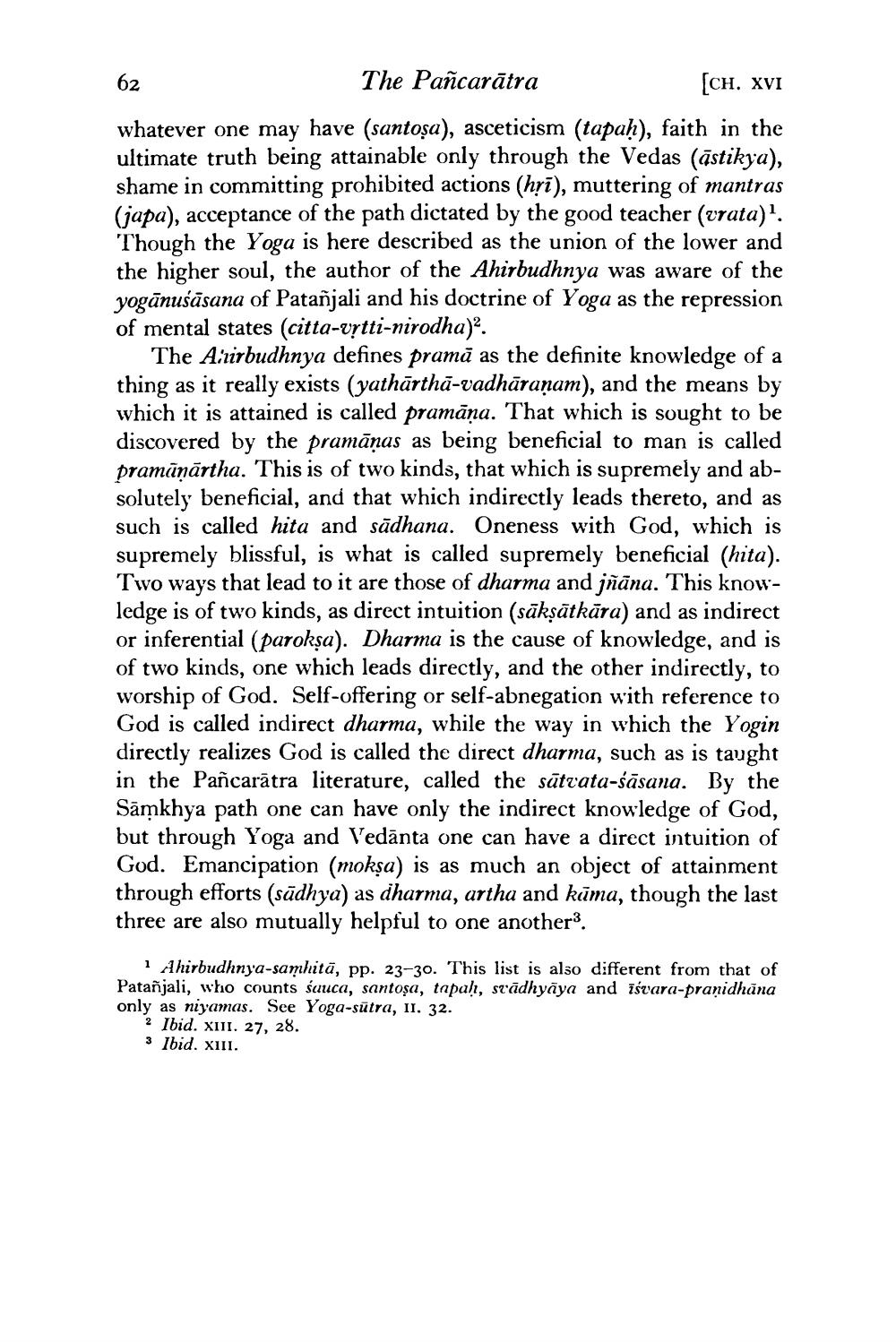________________
62 The Pañcarātra
[CH. XVI whatever one may have (santosa), asceticism (tapah), faith in the ultimate truth being attainable only through the Vedas (āstikya), shame in committing prohibited actions (hrī), muttering of mantras (japa), acceptance of the path dictated by the good teacher (vrata)? Though the Yoga is here described as the union of the lower and the higher soul, the author of the Ahirbudhnya was aware of the yogānuśāsana of Patañjali and his doctrine of Yoga as the repression of mental states (citta-vrtti-nirodha)?
The Arirbudhnya defines pramā as the definite knowledge of a thing as it really exists (yathārthā-vadhāranam), and the means by which it is attained is called pramāņa. That which is sought to be discovered by the pramāṇas as being beneficial to man is called pramūnārtha. This is of two kinds, that which is supremely and absolutely beneficial, and that which indirectly leads thereto, and as such is called hita and sādhana. Oneness with God, which is supremely blissful, is what is called supremely beneficial (hita). Two ways that lead to it are those of dharma and jñāna. This knowledge is of two kinds, as direct intuition (sākṣātkāra) and as indirect or inferential (parokșa). Dharma is the cause of knowledge, and is of two kinds, one which leads directly, and the other indirectly, to worship of God. Self-offering or self-abnegation with reference to God is called indirect dharma, while the way in which the Yogin directly realizes God is called the direct dharma, such as is taught in the Pañcarātra literature, called the sūtrata-śāsana. By the Sāmkhya path one can have only the indirect knowledge of God, but through Yoga and Vedānta one can have a direct intuition of God. Emancipation (moksa) is as much an object of attainment through efforts (sādhya) as dharma, artha and kūma, though the last three are also mutually helpful to one another3.
Ahirbudhnya-samhitā, pp. 23-30. This list is also different from that of Patañjali, who counts sauca, santoșa, tapah, stādhyāya and īśvara-pranidhana only as niyamas. See Yoga-sutra, 11. 32.
2 Ibid. xIII. 27, 28. 3 lbid. xIII.




